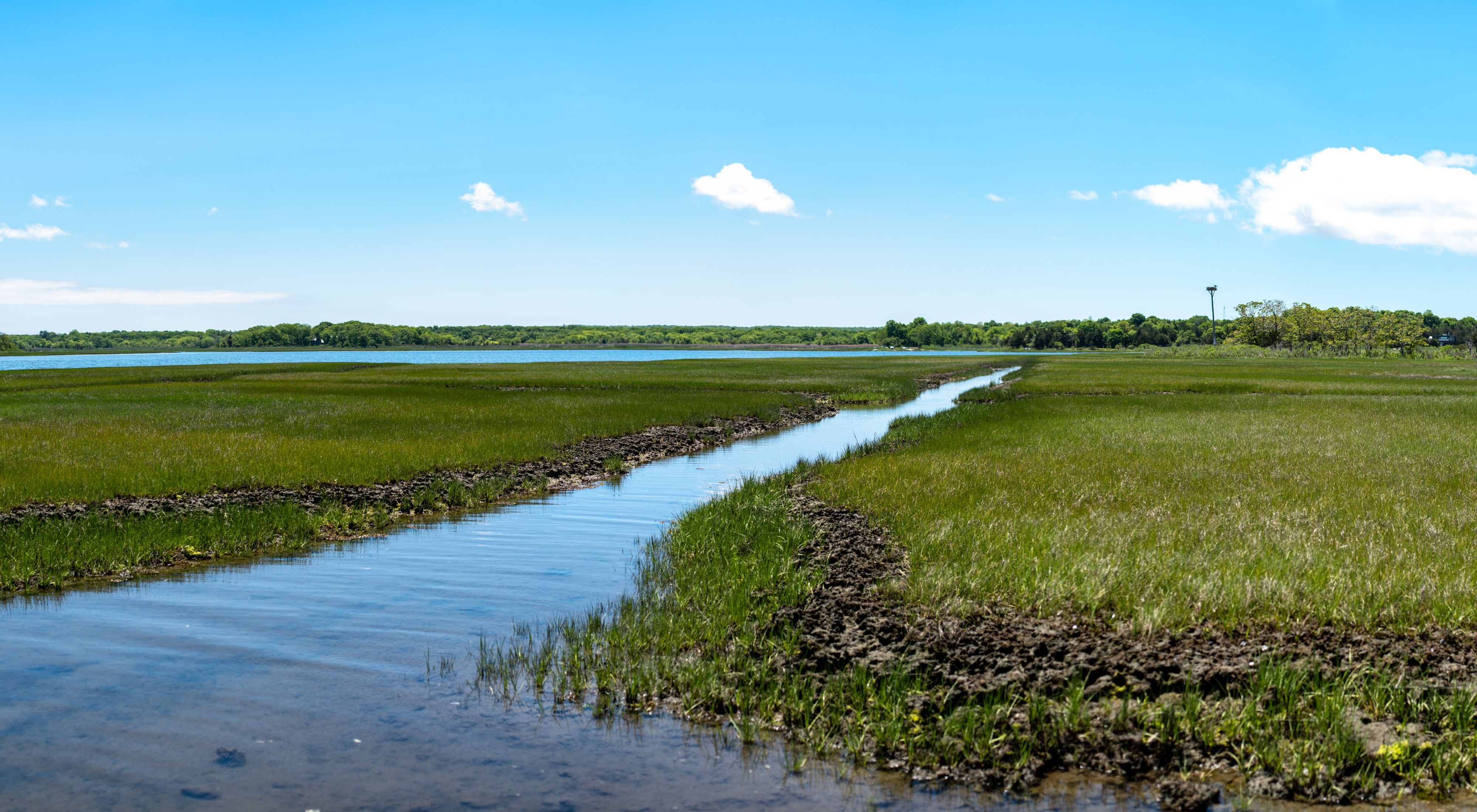Merrill Lake Sanctuary is a bird watcher’s paradise, both for nesting and as a stopover during annual spring and fall migrations. It is also a great place to hike and contemplate the saltmarsh’s incredible capacity to nourish life.
The trails are open for hiking and observing nature from dawn to dusk. It’s a good idea to wear rubber boots at all times of year when exploring Accabonac Harbor.
The trail winds through old pasture and woodland then loop around through the saltmarsh meadow. Wildflowers abound in the pasture throughout the summer. By July, the huge lavender umbels of Joe-pye weed tower above the grasses and goldenrods. When the pastureland floods, look for black duck, willet, black-bellied plover, and glossy ibis.
The next field, beyond the woodlands, is frequented by meadowlarks, bobwhites and kingbirds. Among the wildflowers are seaside goldenrod and orange-blossomed butterfly weed, with islands of shrubby bayberry.
At the upland edge of the saltmarsh grow marsh elder and groundsel tree. The willet, which breeds on this part of the marsh, announces its presence in July with its distinctive ringing Willett call. In the true tidal zone, which floods at high tides, you’ll find glassworts and seaside lavender. The path is an old road once used by local farmers with horse-drawn carts to harvest salt hay.
At the shoreward edge of the high tide line, eelgrass and brown seaweed called wrack provide protection for numerous finfish and shellfish. Eelgrass is also a source of food for waterfowl. Once abundant in Accabonac Harbor, eelgrass declined drastically in the 1980s due to brown tide; the Conservancy is working to restore eelgrass, which is critical to the health of the Peconic region. Amidst the spartina grasses at water’s edge, you can also find periwinkles, horseshoe crabs or even blue-eyed scallops clapping their shells to propel themselves through the water.
